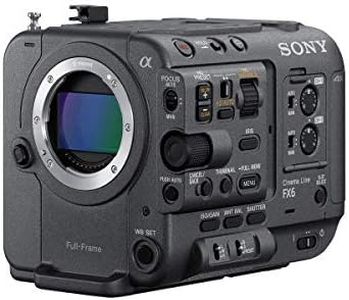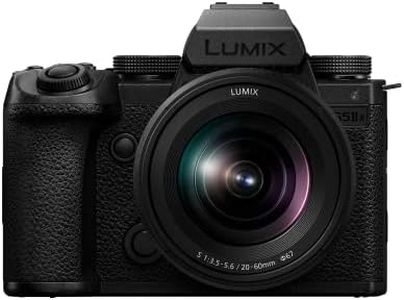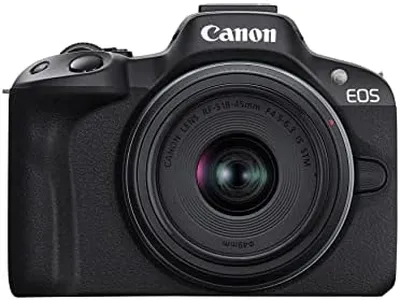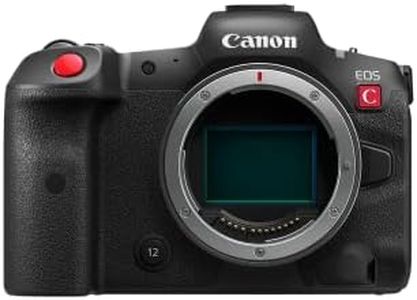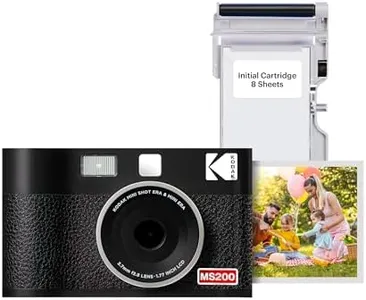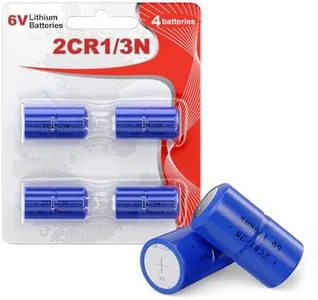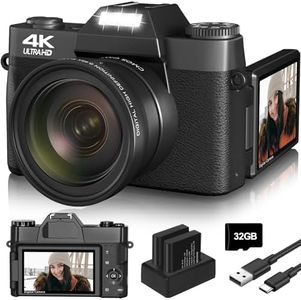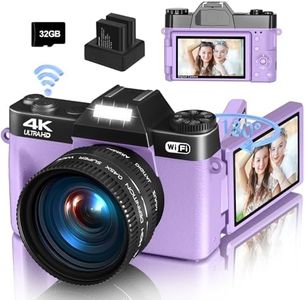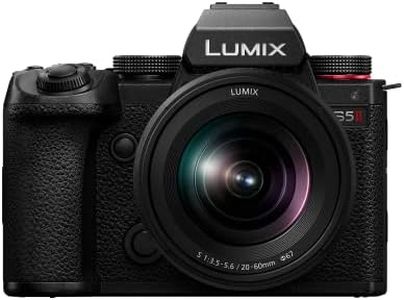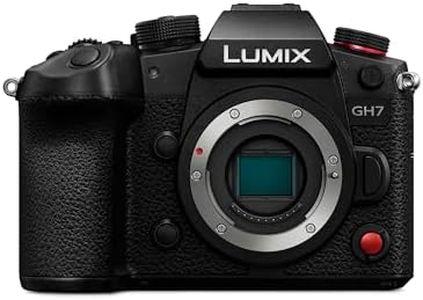10 Best Cinema Cameras 2025 in the United States
Our technology thoroughly searches through the online shopping world, reviewing hundreds of sites. We then process and analyze this information, updating in real-time to bring you the latest top-rated products. This way, you always get the best and most current options available.

Our Top Picks
Winner
SONY ILME-FX6 Cinema Line Full-Frame Camera
Most important from
27 reviews
The Sony ILME-FX6 is a strong contender in the cinema camera category, especially for filmmakers seeking high-quality full-frame performance in a compact body. It features a 10.2MP back-illuminated full-frame sensor that delivers excellent low-light capability with sensitivity up to ISO 409,600 and a wide dynamic range of over 15 stops. This means you can capture more detail in both bright and dark areas, which is crucial for cinematic visuals. The camera supports high frame rates, offering up to 4K 120p and Full HD 240p, giving you the flexibility to shoot smooth slow motion. It records in 10-bit 4:2:2 color internally, ensuring good color depth and grading potential, using the MXF format which is common in professional workflows.
Sony's fast Hybrid Autofocus with 627 phase-detection points and Eye-AF tracking helps keep subjects sharp, which is helpful in run-and-gun or documentary-style shooting. The variable ND filter is electronically controlled, making exposure adjustments quick and precise without external filters. The Sony FE lens mount provides access to a wide range of lenses, allowing versatility in creative choices. Build quality is solid yet lightweight, weighing under 2 pounds, which aids mobility. However, the 10.2MP sensor resolution is lower than some competitors, which could be a drawback if your priority is very high-resolution still frames or extremely detailed 4K footage.
The FX6 is well suited for independent filmmakers and professionals who need a reliable, high-performance full-frame camera with excellent low-light and dynamic range, plus strong slow-motion options, wrapped in a user-friendly package.
Most important from
27 reviews
Sony PXW-FX9 XDCAM Full-Frame Camera System, 4K
The Sony PXW-FX9 XDCAM Full-Frame Camera System is a robust option for filmmaking and professional video production. This camera features a 6K Full-frame Exmor R sensor, which oversamples to deliver impressive 4K video resolution. A significant strength is its 15+ stops dynamic range, allowing it to capture detailed images even in high-contrast scenes. The dual base ISO of 800/4000 enhances performance in varying lighting conditions, making it versatile for different shooting environments.
The camera is also notable for having the world’s first electronic variable ND filter for a full-frame sensor, which provides greater control over exposure without changing the depth of field or shutter speed. It records in Xavi 422 10-bit on XQD media cards, ensuring high-quality footage suitable for professional use. Connectivity is comprehensive with multiple outputs including HDMI 2.0, 12G-SDI, and 3G-SDI, along with various audio input options such as XLR 3-Pin Mic/Line.
The camera's ergonomics and build quality are robust, with a manageable weight of 4.4 pounds and a user-friendly LCD viewfinder. However, a potential drawback is its relatively high price point, which might be a limiting factor for amateur videographers. Additionally, the camera's weight and size might make it cumbersome for handheld shooting over extended periods. Despite these limitations, the Sony PXW-FX9 is a powerful tool for professionals looking for high-quality video capture with extensive control and flexibility.
Panasonic LUMIX S5IIX Mirrorless Camera, 24.2MP Full Frame with Phase Hybrid AF, Unlimited 4:2:2 10-bit Recording, 5.8K Pro-Res, RAW Over HDMI, IP Streaming with 20-60mm F3.5-5.6 Lens - DC-S5M2XKK
Most important from
135 reviews
The Panasonic LUMIX S5IIX is a versatile mirrorless camera designed for professionals and enthusiasts alike. It boasts a 24.2MP full-frame CMOS sensor that delivers high-resolution images with natural color representation. A significant strength of this camera is its Phase Hybrid Autofocus system, which ensures fast and accurate focusing even in challenging lighting situations. The advanced subject detection and metering technologies help maintain focus on moving subjects, making it ideal for dynamic shooting scenarios.
The camera also features impressive image stabilization with Active I.S., which is particularly beneficial for video recording on the go. Another highlight is its capacity for unlimited 4:2:2 10-bit video recording, 5.8K Pro-Res, and RAW over HDMI, which caters to high-end video production needs. Additionally, it supports IP streaming, adding versatility for live streaming applications. The camera includes ergonomic considerations, such as a compact build and an articulating LCD screen, enhancing usability for different shooting angles and conditions.
However, there are a few drawbacks to consider. The maximum aperture of the included 20-60mm lens is only f/3.5-5.6, which might limit low-light performance and depth-of-field control compared to faster lenses. Also, while the camera offers extensive video capabilities, it can be overwhelming for beginners due to its complex features and settings. On the connectivity front, the camera is well-equipped with Bluetooth, Wi-Fi, and USB options. In summary, the Panasonic LUMIX S5IIX is a powerful tool for serious photographers and videographers who need high-quality image capture, robust video options, and reliable autofocus, though it may be more than what a casual user requires.
Most important from
135 reviews
Buying Guide for the Best Cinema Cameras
Choosing the right cinema camera can be a daunting task, but with the right approach, you can find the perfect fit for your needs. Cinema cameras are designed to capture high-quality video footage, and they come with a variety of features and specifications that can greatly impact your filming experience. To make an informed decision, it's important to understand the key specifications and how they relate to your specific needs and projects.FAQ
Most Popular Categories Right Now


